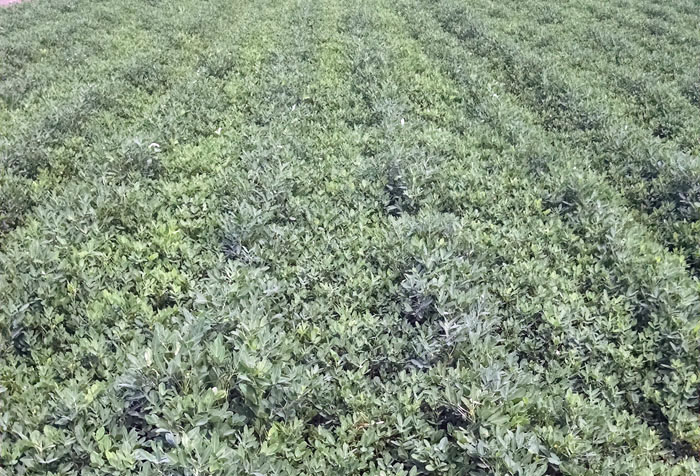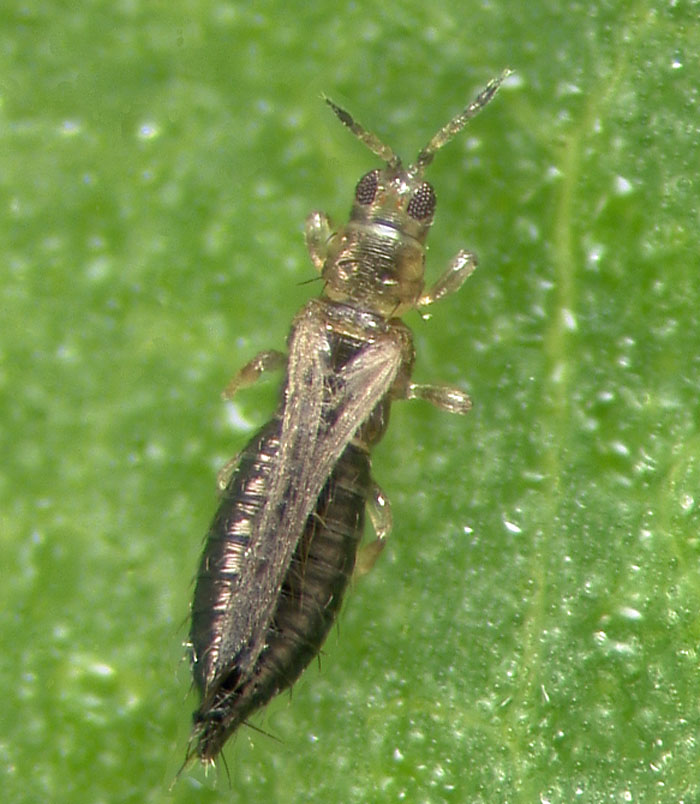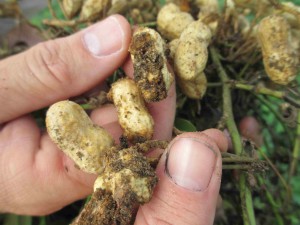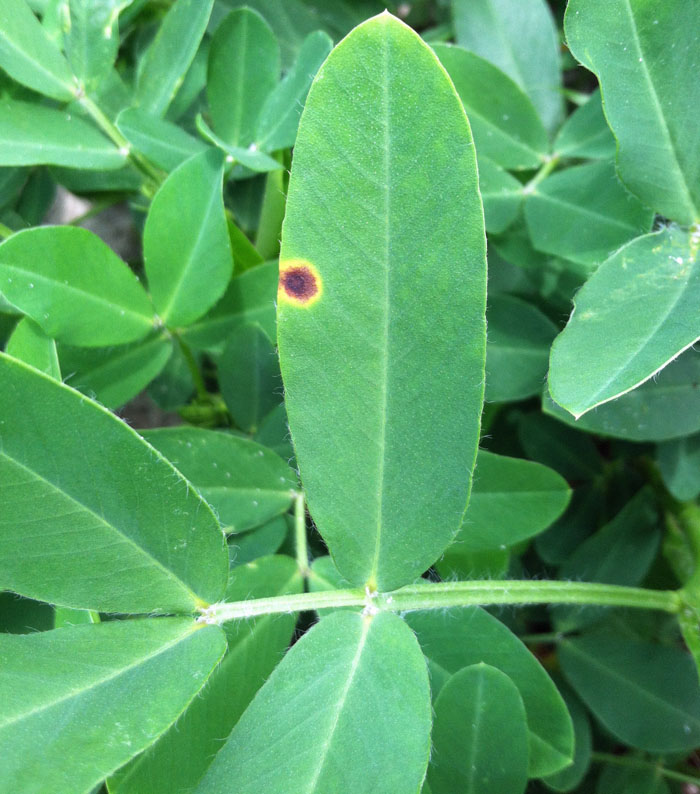Common examples of integrated pest management strategies include manipulation of planting date or row spacing, tillage variations, pesticide use, and variety selection. Most of these are typically used in combination for optimal pest management. Regarding peanut varieties, there are many options available to producers when it comes time to plant. However, drastic differences have been documented in regards to pest and disease resistance among commercially available varieties. These difference are seen in resistance levels for Tomato spotted wilt virus, root-knot nematodes, and various diseases.
Depending on when fields are planted, and the severity of pest and disease pressure, variety selection can be used to help anticipate management decisions that will need to be made during the season. These decisions may involve techniques to reduce costs (reduced number of sprays or using less expensive preventative products) or the development of a strong management plan (more sprays per season or use of more expensive products with better disease control qualities), hinging on the strengths or weaknesses of the planted variety’s resistant traits.
Thrips populations have historically been highest during the month of April, although that does not appear to have been the trend in recent years. Early plantings (before to May 10th) have an increased risk for Tomato spotted wilt virus (TSWV), a thrips vectored virus capable of reducing yields. Varieties with TSWV resistance good for planting prior to this week (May 10th) include Georgia-06G, which currently dominates industry production, Florida-07, TUFRunner™ ‘297’, Georgia-12Y, Georgia-09B, Georgia-07W, Georgia-13M, or Tifguard.
When a field has known nematode pressure, the producer has two options. One option one is to use a nematicide (such as Velum Total or Telone II), and the second option is the use of a nematode resistant cultivar. Nematode resistant cultivars such as Tifguard yield less than the non-resistant cultivars, but under heavy nematode conditions they provide a competitive alternative. Non-resistant varieties will require nematicides that can be expensive, and even then still run the risk of lower yields. The 2016 UGA Peanut Update states it is not necessary to use a nematicide when growing a nematode resistant variety. Depending on a field’s production history, a cost-benefit analysis could be used to determine if it is worthwhile to use a non-resistant variety with a nematicide vs. a resistant variety without a nematicide. Nematode resistant varieties include Tifguard, TifNV-High O/L, and Georgia-14N.
Diseases that occur in peanut include leaf spot, white mold (i.e. stem rot), Rhizoctonia limb rot (limb rot), and Cylindrocladium black rot (CBR). The table below is an excerpt from Peanut Rx for 2016 and it shows the spotted wilt, leaf spot, and white mold risk points associated with different commercial varieties. This is an intuitive rating system, with low numbers associated with a lower disease risk and high numbers associated with a higher risk.
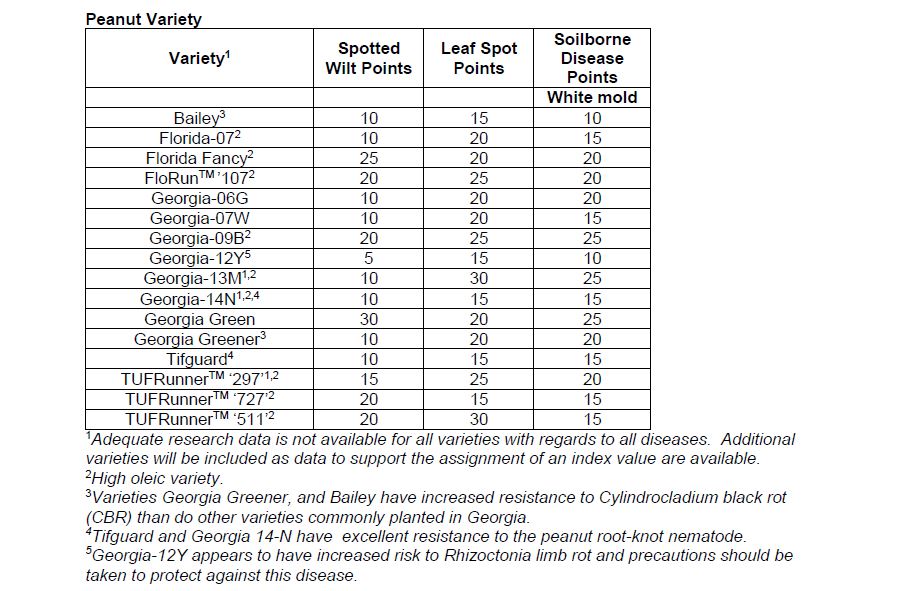 Varieties with leaf spot resistance include TUFRunner™ ‘727’, TifNV High O/L, Tifguard, Georgia-12Y, and Georgia-14N. The risk of leaf spot increases as you plant later in the season, early plantings (before May 10) can help offset varieties with a higher leaf spot risk (TUFRunner™ ‘511’ and Georgia-13M). Early planting, however, increases the risk of Tomato spotted wilt virus.
Varieties with leaf spot resistance include TUFRunner™ ‘727’, TifNV High O/L, Tifguard, Georgia-12Y, and Georgia-14N. The risk of leaf spot increases as you plant later in the season, early plantings (before May 10) can help offset varieties with a higher leaf spot risk (TUFRunner™ ‘511’ and Georgia-13M). Early planting, however, increases the risk of Tomato spotted wilt virus.
A shortened rotation (peanuts grown multiple years) increases the risk of white mold, which is by far one of the most expensive and difficult disease to control. If a field is high risk for white mold, good variety options for planting include Florida-07, TUFRunner™ ‘297’, TUFRunner™ ‘727’, TUFRunner™ ‘511’, Tifguard, Georgia-12Y, Georgia-07W, and Georgia-14N.
The four varieties with good resistance to both leaf spot and white mold (TUFRunner™ ‘727’, Tifguard, Georgia-12Y and Georgia-14N) can produce well even when treated with less expensive, protective fungicides such as chlorothalnil and tebuconazole. Georgia Greener is known to have increased resistance to CBR, and Georgia-12Y appears to have an increased risk to limb rot than some other varieties.
Planting date and field history can be used to predict what problems you may experience during the season. Regardless of whether or not the crop has already been planted, the planting date and field history will allow for some flexibility regarding variety selection, or at least anticipate which pests or diseases will need to be monitored and be prone to more intensive management.
For more information please see the University of Georgia’s 2016 Peanut Update
- 2025 Peanut Field Day Recap & Speaker Handouts - August 29, 2025
- Peanut Foliar Diseases Exploding Across Florida - August 22, 2025
- Provisional Nitrogen Fertilization Recommendation for Florida Cotton for the 2025 Season - June 20, 2025

